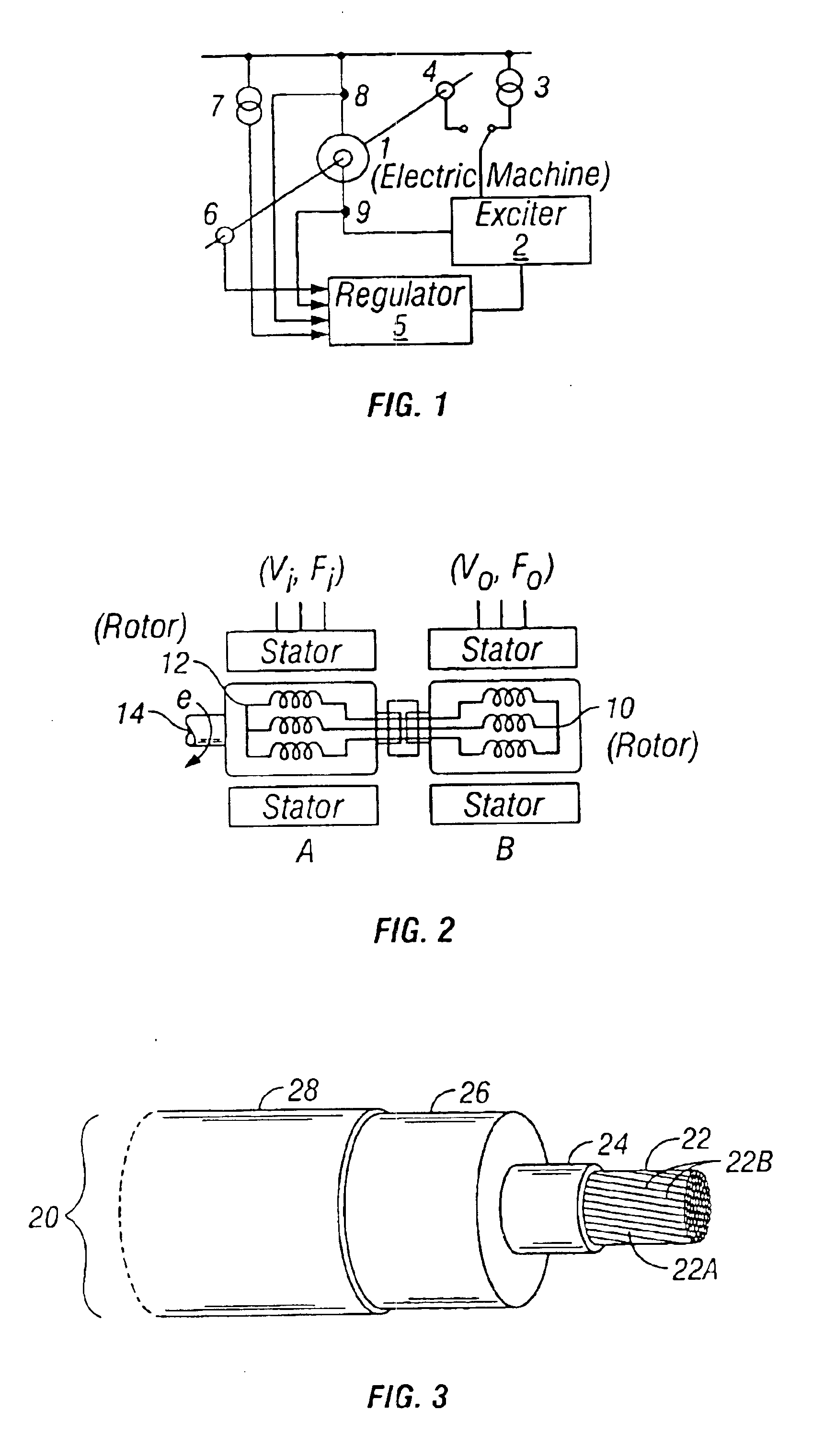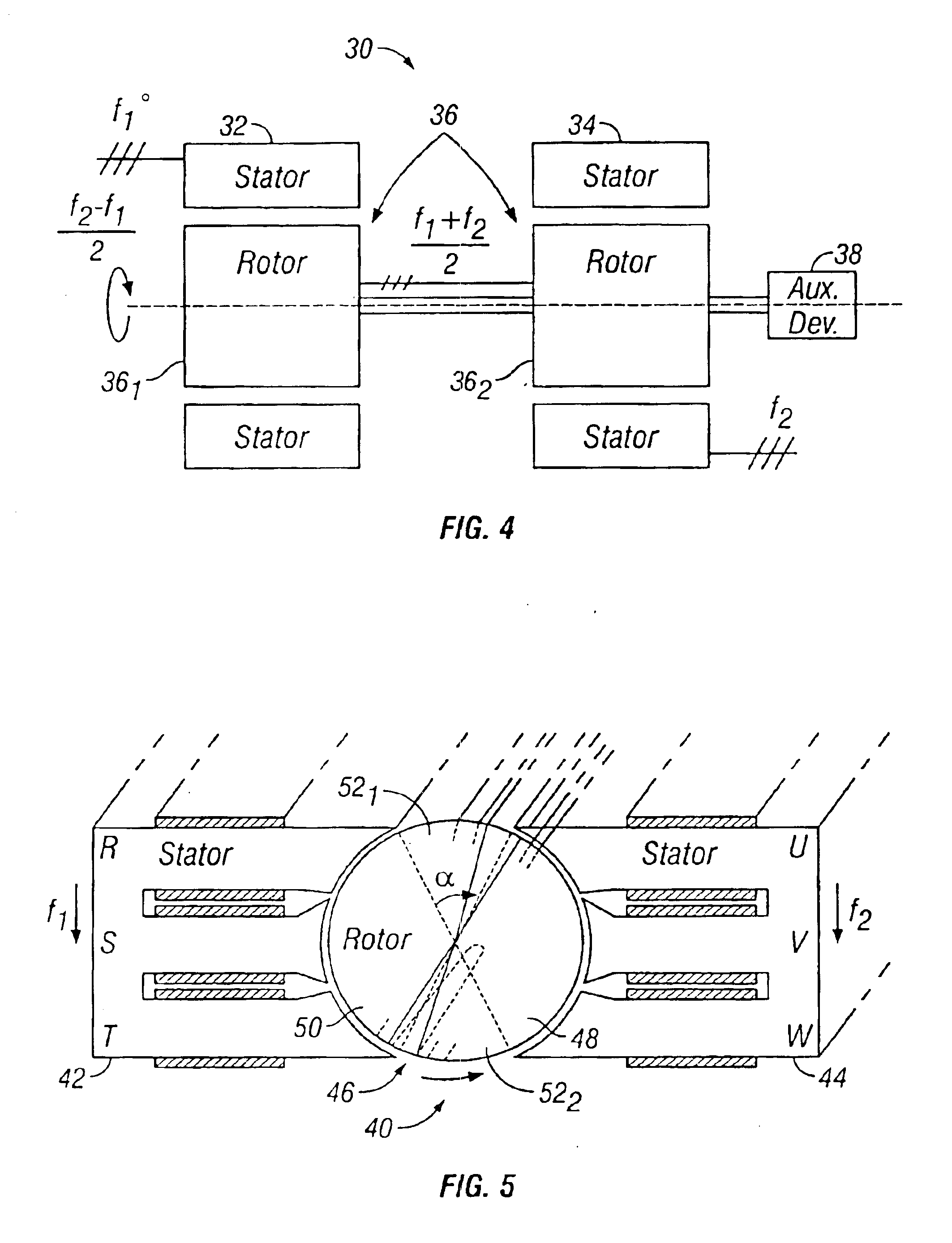Rotating asynchronous converter and a generator device
a generator device and asynchronous converter technology, applied in the direction of magnetic circuits, emergency protective arrangements for automatic disconnection, insulated cables, etc., can solve the problems of low efficiency (ca 95%), use of special converter transformers with very complex design, and drawbacks of static converters. achieve the effect of high efficiency
- Summary
- Abstract
- Description
- Claims
- Application Information
AI Technical Summary
Benefits of technology
Problems solved by technology
Method used
Image
Examples
first embodiment
[0033]FIG. 4 shows a rotating asynchronous converter 30 according to the present invention. The rotating asynchronous converter 30 is used for connection of AC networks with equal or different frequencies. The converter 30 comprises a first stator 32 connected to a first AC network (not disclosed) with a first frequency f1, and a second stator 34 connected to a second AC network (not disclosed) with a second frequency f2. In the disclosed embodiment the stators 32, 34 are three phase stators 32, 34 comprising three windings each, wherein each winding comprises at least one current-carrying conductor, and each winding comprises an insulation system, which comprises on the one hand at least two semiconducting layers, wherein each layer constitutes substantially an equipotential surface, and on the other hand between them is arranged a solid insulation. The windings can also be formed of a cable of the type disclosed in FIG. 3. The converter 30 also comprises a rotor means 36 which rot...
second embodiment
[0034]In FIG. 5 there is disclosed the rotating asynchronous converter 40 according to the present invention. The rotating asynchronous converter 40 is also used for connection of AC networks with equal or different frequencies. The converter 40 comprises a first stator 42 connected to a first AC network (not disclosed) with a first frequency f1, and a second stator 44 connected to a second AC network (not disclosed) with a second frequency f2. In the disclosed embodiment the stators 42, 44 are three phase stators 42, 44 comprising three windings each, wherein each winding can be of the type described in connection to FIG. 4. The converter 40 also comprises a rotor means 46 which rotates in dependence of the first and second frequencies f1, f2. In the disclosed embodiment the rotor means 46 comprises only one rotor 46 concentrically arranged in respect of said stators 42, 44. Said rotor 46 also comprises a first loop of wire 48 and a second loop of wire 50, wherein said loops of wir...
PUM
| Property | Measurement | Unit |
|---|---|---|
| diameter | aaaaa | aaaaa |
| frequency | aaaaa | aaaaa |
| voltages | aaaaa | aaaaa |
Abstract
Description
Claims
Application Information
 Login to View More
Login to View More - R&D
- Intellectual Property
- Life Sciences
- Materials
- Tech Scout
- Unparalleled Data Quality
- Higher Quality Content
- 60% Fewer Hallucinations
Browse by: Latest US Patents, China's latest patents, Technical Efficacy Thesaurus, Application Domain, Technology Topic, Popular Technical Reports.
© 2025 PatSnap. All rights reserved.Legal|Privacy policy|Modern Slavery Act Transparency Statement|Sitemap|About US| Contact US: help@patsnap.com



